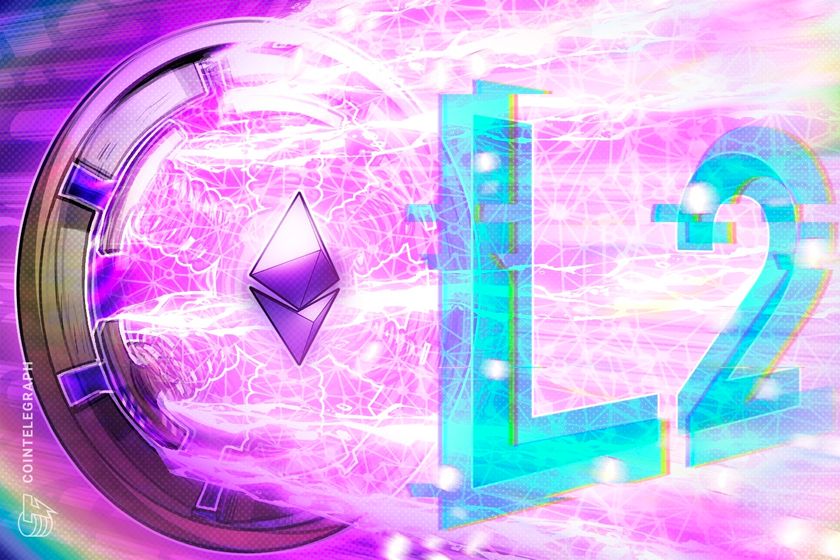

Opinion by: Igor Mandrigin, co-founder and CTPO of Gateway.fm
Every couple of weeks, it seems another layer 2 rolls out, much to the chagrin of some Web3 industry commentators who are concerned about fragmentation. A recent Gemini Institutional Insights report actually noted how a new Ethereum L2 solution is launched approximately every 19 days. In response to the seemingly endless conveyor belt of new zkEVMs and optimistic rollups coming to market, the chorus of criticism continues to grow louder: “This is definitely the saturation point, no more chains are needed.”
Some of the most outspoken critics of L2s argue that L2s are redundant, but this is narrow thinking. In many ways, the idea that creating new L2s should be slowed down is like arguing that there were too many websites in 1998. The proliferation of L2s is not causing the Web3 space to become overly bloated or fragmented at all. The number of chains today isn’t too many. It’s laughably few, and right now is the early innings of a multi-decade explosion in specialized, modular blockchain infrastructure.
The rise of L2s is far from a passing fad
While some contend that this L2 surge we’ve been experiencing is merely a temporary frenzy led by DeFi degenerates, it’s really an enterprise-grade infrastructure expansion, as banks (including Deutsche Bank), game studios (gaming activity on some L2 blockchains rose by over 20,000% in February 2025), logistics networks and global manufacturers get on board.
Industries like banking and logistics, which are typically risk-averse, don’t make major tech pivots lightly. They do so because they have to, and in many cases, public blockchains do not meet their needs. Returning to their inherent risk-averse DNA, large enterprises and institutions in these sectors generally won’t want to build on shared, general-purpose L1s. Instead, they’ll want to deploy their own chains where they can enjoy custom performance, predictable costs, jurisdictional compliance and granular-level privacy.
This focus on proprietary networks isn’t solely a Web3 thing. Let’s think about it. Did Facebook, Netflix and JPMorgan co-host on GeoCities? Of course not, so why would Web3 be any different? Shared L1s and monolithic architectures might have worked for early token experiments and composable DeFi primitives. Still, realistically, they can’t support real-world businesses’ complexity, regulatory burden or contractual requirements.
The growing viability of L2s
Thanks to modular stacks, rollup-as-a-service platforms and breakthrough zero-knowledge proof technology, spinning up a dedicated chain is becoming increasingly viable and accessible to a wide range of enterprises across the industry spectrum. As the infrastructure improves, the cost of launching and maintaining specialized chains will also reduce, so a substantial rise in the number of L2s can be expected as time goes on.
Recent: Devs introduce Ethereum R1 layer-2 scaling solution
Some onlookers will argue that this future will be convoluted for users forced to hop between chains while voicing concerns about liquidity fragmentation and the dispersal of tradable assets across multiple platforms. These are short-sighted concerns. We’re building toward seamless interoperability through shared settlement layers, trust-minimized bridges and unified account abstraction. Ultimately, the end-user won’t care whether they’re on rollup #4,318 or chain #9,072; they’ll just transact with ease and be happy with that.
In the same way that cloud computing unlocked hyper scale by abstracting the hardware layer, modular blockchains are unlocking hyperscale for value transfer, asset issuance and programmable trust. Irrespective of what the doubters say, specialized L2s won’t cannibalize each other. They’ll serve different verticals, jurisdictions and use cases. There is no reason why an L2 for high-frequency trading can’t easily coexist with an L2 for national land registries.
We’re not drowning in chains — we’re barely ankle-deep in the grand scheme of things. Anyone seriously betting on consolidation or some magical “winner-take-all” chain is just betting against scale and sovereignty. The real bet is hundreds of L2s and thousands of use cases as part of one modular, scalable future.
Opinion by: Igor Mandrigin, co-founder and CTPO of Gateway.fm.
This article is for general information purposes and is not intended to be and should not be taken as legal or investment advice. The views, thoughts, and opinions expressed here are the author’s alone and do not necessarily reflect or represent the views and opinions of Cointelegraph.

 1 month ago
47
1 month ago
47








 English (US) ·
English (US) ·